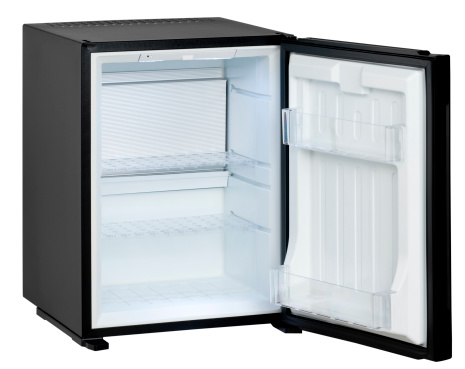
Blog Series #2 by Jim Brown
As prices for fuel continue to rise, you might begin to look for ways to reduce how many miles you put on your car. You might also have noticed that your electric bill has gone up, and are looking for ways to reduce your bill. At the pump, you pay per gallon of fuel. The bill for your electric at home or work is billed in kilowatt hours.
Recently, a custodian in the school district I work for asked if I knew how much it would cost to “run” a mini fridge for a year? I replied “No, but I could figure it out.” He replied, “I’d appreciate that, because I want to put one at camp and I’d like to know how much it will cost me.”
Determining the cost of something that has a known wattage and is either on or off, such as a light bulb, is fairly easy to calculate just by crunching numbers. When it comes to items that have components that turn themselves on and off, such as the compressor for a refrigerator, it takes a little more leg-work. To determine how much it will cost to run, you must find the average number of watts per hour it uses. This is analogous to a car’s average miles per gallon.
Although many cars find this average for us, appliances do not. To determine this, I used a tool called a Kill A Watt meter.

 I found a 1.7 cubic foot energy star rated mini fridge in one of our schools and plugged the meter into the wall, and the mini fridge into the meter. Twenty-four hours later I found it used a total of .32 kilowatt-hours, or an average of 13.3 watts per hour. The national average electric rate as of March 4, 2022 is 13.75 cents per kWh. At that rate, it would cost just over $16 to run this refrigerator for a year.
I found a 1.7 cubic foot energy star rated mini fridge in one of our schools and plugged the meter into the wall, and the mini fridge into the meter. Twenty-four hours later I found it used a total of .32 kilowatt-hours, or an average of 13.3 watts per hour. The national average electric rate as of March 4, 2022 is 13.75 cents per kWh. At that rate, it would cost just over $16 to run this refrigerator for a year.
For those interested in the math, it is 13.3 watts per hour, times 24 hours per day, times 365 days per year, times 13.75 cents, all divided by 1000 watts per kilowatt
 Unplugging the mini fridge would save $16 per year. But what if you sometimes needed it throughout the year? Emptying and unplugging the mini fridge when not needed (remember to prop the door open so it will not mildew) would help reduce that cost. In schools there are many opportunities to save, such as holiday breaks, winter break, spring break, and summer. Let’s say that over those times the fridge could be unplugged for a combined total of 14 weeks. That would save over $4. That might not sound like a lot, but consider how many other electronic items you have plugged in that are not being used, yet are still consuming energy? Then consider a school district such as mine, which has 8 educational buildings, a district office, and a transportation facility. There are literally hundreds of mini fridges (if not more) throughout my district. At just 100, the savings would be over $400 per year! And this is for an ENERGY STAR® rated mini fridge. Full size refrigerators could save many times this amount. $400 could buy a lot of fuel, or any number of things a district might need.
Unplugging the mini fridge would save $16 per year. But what if you sometimes needed it throughout the year? Emptying and unplugging the mini fridge when not needed (remember to prop the door open so it will not mildew) would help reduce that cost. In schools there are many opportunities to save, such as holiday breaks, winter break, spring break, and summer. Let’s say that over those times the fridge could be unplugged for a combined total of 14 weeks. That would save over $4. That might not sound like a lot, but consider how many other electronic items you have plugged in that are not being used, yet are still consuming energy? Then consider a school district such as mine, which has 8 educational buildings, a district office, and a transportation facility. There are literally hundreds of mini fridges (if not more) throughout my district. At just 100, the savings would be over $400 per year! And this is for an ENERGY STAR® rated mini fridge. Full size refrigerators could save many times this amount. $400 could buy a lot of fuel, or any number of things a district might need.
If you would like to learn more about using a Kill A Watt meter and other energy management tools, be sure to check out NEED’s suite of energy management guides, available at the elementary, intermediate, and secondary level as a free PDF download or e-publication. These guides provide hands-on activities to use the school as a real-world laboratory to measure energy consumption, while quantifying costs and impacts to a budget and the environment. The lessons build upon one another, allowing students to explore heating and cooling, electricity, and lighting, before culminating in a building-wide audit.

Author Bio: Jim Brown has over 25 years teaching experience at the middle school level, and has carved out a niche as a STEM teacher and a certified energy manager, specializing in energy management and auditing of educational facilities. Jim is also a NEED teacher and facilitator. Follow Jim Brown on Twitter at @MrSTEMBrown
